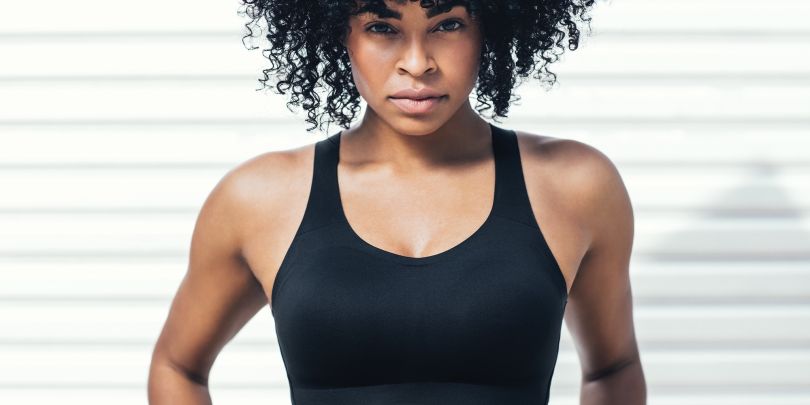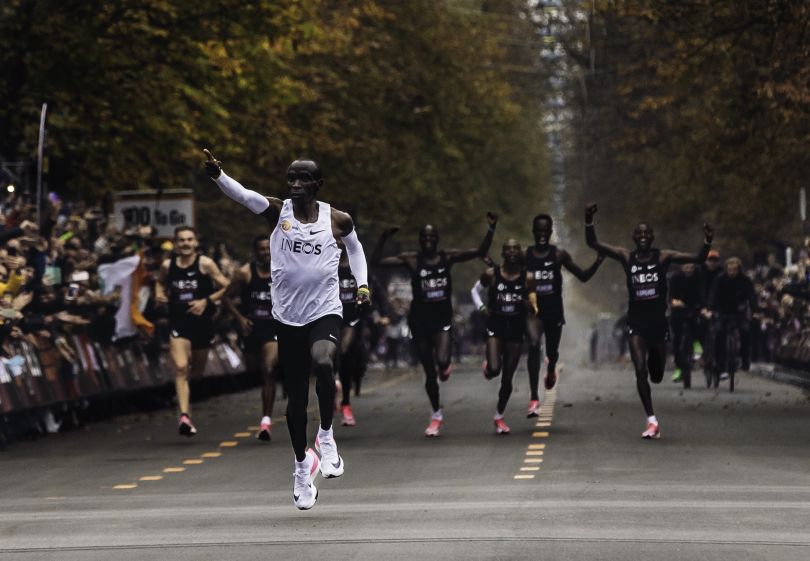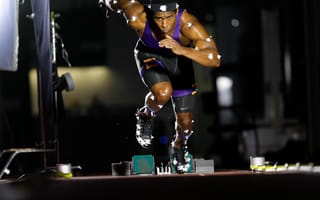Underneath the Vancouver headquarters of Lululemon is a secretive R&D facility where researchers gather data from swimmers, cyclists and runners.
Despite its subterranean location, the “Whitespace” lab has more in common with a startup office than Area 51, with intimate meeting rooms complete with doors that can be written on, felt cubes that double as chairs and wooden stadium seating. But few startup offices boast their own endless swimming pool, temperature simulation room and heat-sensing cameras.
Whitespace researchers use this equipment to study the human body in motion, and their insights inform nearly every aspect of the product development process at Lululemon. And the company isn’t an outlier among athletic apparel brands in its preoccupation with data.
Across the sportswear industry, data gathered from both athletes and active consumers can play a large role in the product development process. Nike has worked with elite athletes at its own semi-clandestine research facility since the 1980s to develop and test products. In addition to operating an R&D lab, Under Armour’s network of fitness apps allow product designers to glean insights from active consumers.
The real question, though, is what impact these data-gathering efforts have made on the sports bras and running shoes these companies sell. To answer that, we took a closer look into how retailers in the space are collecting and employing data.

Using Data to Design Better Sports Bras
Lululemon is one of the largest athletic apparel brands in the world, and some of its most important R&D work takes place in a basement. Inside the 9,800-square-foot Whitespace lab, researchers prototype and test new bras, yoga pants, swimsuits — and the fabrics they’re made from. The R&D lab is led by Tom Waller, Chief Science Officer and SVP of advanced information.
“We’ve created this place to understand how you move, and how you feel when you move,” Waller told Fast Company in 2018.
To understand movement, Whitespace researchers attach sensors to joggers on treadmills, use 3D cameras to capture how the body interacts with fabric when walking, and track how brain waves change in response to shifting landscapes and climate. Data gathered at Whitespace informed the design of the “Enlite Bra,” a sports bra the company said bridges the gap between comfort and performance.
Whitespace researchers set out to challenge the assumption that sports bras should restrict breast movement. The team used motion-capture cameras to study how breasts move independently during exercise, and analyzed the data to learn whether this movement impeded performance and reduced comfort. Lululemon discovered that some types of breast movement actually serve to provide more support and comfort to wearers.
“We looked at how the body moves and at the contouring shape of it in order to understand how to develop a product that adheres to the needs of the guest during a high-intensity workout,” Laura Dixon, a designer at Lululemon, said in a statement.
In addition to the data gathered at its R&D lab, Lululemon has also begun gathering data from customers. “Signature Movement” recreates the Whitespace experience, with women donning sensors and jogging on a treadmill to learn more about how their breasts move while exercising.
That data, combined with answers from a questionnaire on fit and feel, is used to provide personalized sports bra recommendations. Along with providing an enhanced customer experience, Lululemon is using the customer data in the design of future products.

Engineering a Record-Breaking Shoe
Like Lululemon, some of Nike’s most groundbreaking products are born in the company’s R&D lab. Take the ZoomX Vaporfly Next%, the shoe Eliud Kipchoge wore when he became the first person to run a marathon in under two hours.
Nike claims these shoes reduce energy loss by more than 4 percent, and although this sounds like marketing speak, independent researchers have confirmed that the Vaporfly, specifically the Zoom Vaporfly 4%, does seem to make runners faster.
The Vaporfly is the result of a special project run by the Nike Sport Research Lab, or NSRL, located at the company’s world headquarters in Beaverton, Oregon. Nike established the NSRL to gather data from top athletes like Kipchoge to improve its products. In an interview with Nike News, the company’s official news site, NSRL head Matthew Nurse said his team captures “an unbelievable amount of data” in each one of their studies.
“Take motion capture for example,” Nurse told Nike News. “We put markers on athletes and collect 200 frames per second and higher, and each one of those has three-dimensional coordinates from the athlete’s movements. Over the course of one particular study, we have, say, 10 subjects come in with two different shoes, or two different actions (running, jumping), and we end up with millions of data points that we need to capture and analyze.”
While the Vaporfly is an extreme example of the NSRL’s capabilities, the R&D team doesn’t just dedicate itself to moonshot projects. According to Nike, the NSRL gathers data from thousands of athletes a year through a series of 3D body scans and physical tests that measure everything from ankle and toe mobility to the amount of force generated from stationary jumping.
Nike said it uses this data to design clothing that fits athletes by sport — “medium” means one thing to a football player and another to a marathon runner — and engineer sport-specific shoes that aid performance and decrease the risk of injury.

Taking Action on Fitness Tracker Data
In 2017, Under Armour opened an R&D facility in Portland, Oregon, which is basically Nike’s backyard. (Beaverton is a 20-minute drive away.) The Portland team focuses on footwear design and development, working with athletes to gather performance data. Unlike their Nike counterparts down the road, Under Armour product designers also have a trove of consumer fitness data to tap into.
“You know their running pace, how far they go, how often they go. You literally know what brand of Greek yogurt they use.”
From 2013 to 2015, Under Armour went on an acquisition tear. In less than two years, the company spent more than $700 million on four fitness and diet-tracking apps, according to data from Crunchbase. The acquisitions of MapMyFitness, MyFitnessPal, Endomondo and Gritness gave Under Armour access to health and fitness data from more than 100 million people.
“There’s unbelievable data in there,” said Chief Strategy Officer Kevin Haley in a 2016 interview with Inc. “You know their running pace, how far they go, how often they go. You literally know what brand of Greek yogurt they use.”
In the interview, Haley told Inc. that data from MapMyFitness indicated the average length of a run was 3.1 miles, so Under Armour created a shoe, the Speedform Gemini, specifically designed for that distance. More recently, data scientists used MapMyFitness data sourced from the company’s line of connected shoes to see if runners with a higher body mass index wore out their shoes faster than those with a lower body mass (the results were inconclusive).
Lululemon, Nike and Under Armour provide a snapshot into the increasingly important role data is playing in the athletic apparel industry. In the future, it’s possible that consumer data sourced in-store and on fitness apps will enable athletic apparel companies to fine-tune the design of their products to the nth degree. Put another way, imagine a Lululemon store filled with sports bras designed for specific sports, or a section of Nike or Under Armour’s online shop where running shoes are sorted by max distance.




